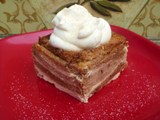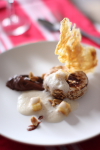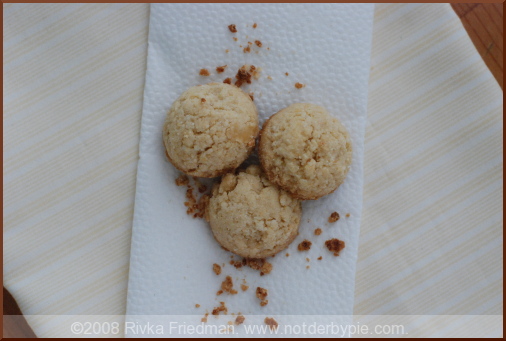 It always takes me a while to get over the end of summer's abundance; I spend a good part of September missing peak tomatoes and fretting about corn's impending end. But once October comes around, I'm fully ready for fall, which brings pleasure of a different sort.
It always takes me a while to get over the end of summer's abundance; I spend a good part of September missing peak tomatoes and fretting about corn's impending end. But once October comes around, I'm fully ready for fall, which brings pleasure of a different sort.
Once I've left summer behind, I'm ready for the reds, oranges, and deep golden yellows of the leaves in Rock Creek Park. I'm ready to put on one of those big, chunky sweaters, a pair of my favorite jeans, and my steadfastly loyal black riding boots, and take a walk through the park. I love the crunch of those leaves beneath my feet. the crisp chill of the air that sneaks between my scarf and the neck of my sweater, the smell of my favorite lip balm that makes its annual debut this time of year. It's fall, people.
When the air is as crisp as the leaves, I often find myself standing over the stove, watching walnuts toast and inhaling that intoxicating smell, and occasionally sneaking my hands out of my sweater sleeves for a quick toasting of their own over the hot pan.
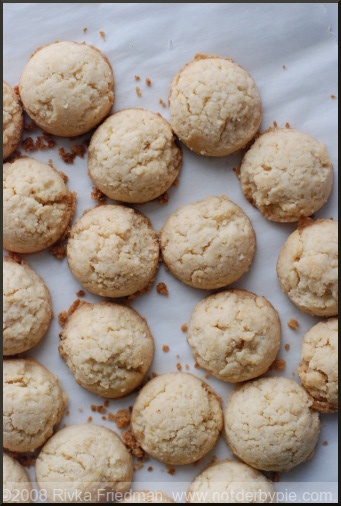
Fall is the perfect time for all things toasted. Toasting can intensify the flavors of nuts and spices, caramelize the natural sugars in fruits and even some vegetables (like onions), and bring out rich, nutty undertones that might otherwise remain dormant in the food we eat.
With yours truly playing hostess, Sugar High Friday's Toasted Edition is finally here. Several wonderful bloggers cooked up some scrumptious-looking desserts, all of which incorporated at least one toasted element, and I've made something toasted of my own -- something fairly unconventional, which I hope you'll enjoy.
But without further ado, the round-up:
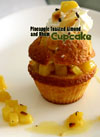
First, we have Dhanggit of Dhanggit's Kitchen, who made a Pineapple, Toasted Almond and Rum Cupcake. Bright flavors, but the toasted almond lands this dessert squarely in fall territory. Looks delicious!

Next, we have Graziana from Erbe in cucina (Cooking with herbs), who made Cinnamon Basil Pancakes. I'd never heard of cinnamon basil before, but it sounds fascinating! Graziana says you can substitute regular basil and a bit of cinnamon if you don't have access to a cinnamon basil plant.
Up next is Rocquie from Sage Trifle, who baked up some delicious-looking Cinnamon Toast Bread Pudding for all of us to drool over. It's hard to imagine what could be better than layer upon layer of cinnamon toast sandwiching pecans and raisins and topped with whipped cream. 'Scuse me for drooling!

Then there's Kitty from Fahrenheit 350°, who made something she calls Pear Eclipse: call it what you will; it's got homemade puff pastry, pears, and mascarpone cream. Say no more.
And last but not least, Cathy from Aficionado made a Toasted PB and Choco-Banana Sandwich, a recipe that comes complete with its own warning label: Do not make this at home, says Cathy! Seriously. It's dangerously unhealthy and, if I had to guess, dangerously tasty.
There you have it -- our Sugar High Friday Toasted Edition Round-up! Thanks to all who contributed, and I look forward to trying my hand at some of these sweet treats.
My submission to this month's event is the shy girl-next-door to the queen bees listed above. It's ingredients are more simple, and its toasted flavor is more subtle, though plenty complex. I was inspired by Clotilde's post on Chocolate and Zucchini a while back about re-imagining her favorite sable recipe using a technique from Pierre Gagnaire: Clotilde remade her mother's sables, but subbed toasted flour for the regular raw flour called for in the recipe. The resulting dough may have been hard to shape, but she just swooned over the "grilled" flavor that came through in the finished product. I simply had to try my hand at this.
Clotilde explains that the concept of toasting flour is similar to roasting coffee beans, the goal being to partially carbonize the beans and make them more fragrant. Toasting flour isn't hard: you spread it in a thin layer on a rimmed baking sheet, and pop it in a 320-degree oven for about 20 minutes, stirring every 5 minutes or so, until flour smells nutty and fragrant. The flour won't take on much if any color, so let your nose guide you.
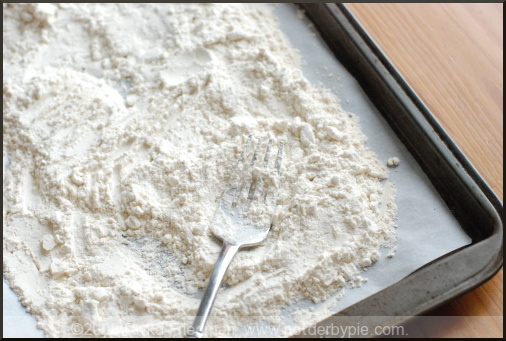
One thing to note about toasted flour is that, not surprisingly, its chemical structure is different from that of regular flour, and weakens the gluten molecules, which makes toasted-flour dough less elastic than its traditional counterpart. While it wouldn't be ideal for bread-making, toasted flour is perfect for sables or sand cookies, which are meant to have a more crumbly consistency.
In deciding which sable recipe to make, I considered several possibilities. Poilane, the famed boulangerie in Paris, has a most delectable sable they call "punitions" (punishment cookies, though eating them is exactly the opposite). The sable comprises just wheat flour, sugar, butter, and eggs -- nothing else -- and achieves both flavorful simplicity and textural perfection. I agreed with Clotilde that vanilla and other flavorings should be withheld to let the flavor of the toasted flour shine through on its own, so Poilane was certainly a possibility. I was intrigued, however, by Clotilde's sable recipe, which calls for milk. I suspected that the milk might lend the cookies a smooth, velvety quality, and was curious to try it out. In researching sable recipes, I also found that some bakers prefer a mix of granulated and powdered sugar, which is said to act more like a liquid and make the sables softer. I knew I wanted a crisp, crunchy cookie, so powdered sugar was out.
In the end, I settled on a mix of Clotilde's and Poilane's recipes, including salt and milk (which Poilane doesn't) in my dough. I found, as Clotilde did, that the toasted flour made for a very crumbly dough that fought my efforts to make it adhere; undeterred, I pulled out my trusty melon baller, using it to compress little half-spheres of dough and rapping it a few times against my baking sheet to release the mounds. So I had button cookies instead of the flat, cylindrical wafers I'm used to; I guarantee, they tasted no less delicious. The sables were just as pure and simple as they always are, only their flavor was more intensified. No vanilla was needed, and I'm glad I didn't include it; once toasted, the flour became a flavoring agent strong enough to stand on its own. I'm glad I included the salt, though, because it added another dimension in which to taste that nuttiness of the toasted flour. And the texture was just so interesting: more crumbly than traditional sables, perhaps less sandy. Needless to elaborate, I really, really liked them.
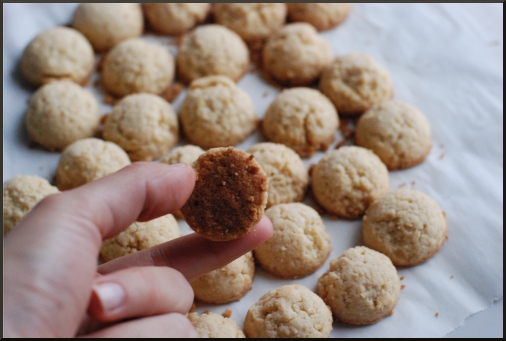
I'll provide the recipe I used, but definitely feel free to experiment: try your favorite sable recipe, or even a chocolate cookie. Who knows? Toasted flour could be the next big thing. I might try it next in linzer cookies, which I made this week and quickly devoured. But definitely do try toasting flour; its flavor is unlike anything I've ever had before, and I can't wait to explore its many possible uses.
Toasted Flour Sables adapted from Clotilde and Poilane Bakery
1 1/2 cups all-purpose flour, toasted according to instructions above (in a 350-degree oven for 20 minutes); if you've ever considered splurging on fancy farmers' market flour, this would be the time 1 stick butter, cut into chunks 1/3 cup sugar 1 egg yolk 2-3 tablespoons milk 1/2 teaspoon salt flakes, the best you've got
In the bowl of a food processor, combine flour, sugar, and salt. Pulse a couple times to combine. Add butter, and process until dough forms fine crumbs. Add egg yolk and pulse a few more times to incorporate. Then add milk, one tablespoon at a time, and pulse until dough is moist enough that when you squeeze it, it sticks together.
Line a baking sheet with parchment paper. Using a melon baller or two teaspoons if you prefer, gather clumps of the dough right from the processor bowl and press against the side of the bowl to ensure that dough holds together. Turn the melon baller upside so that the cookie inside can fall onto the cookie sheet, and rap the melon baller against the sheet until the cookie falls out. Organize cookies on the baking sheet and refrigerate 1 hour to harden. Bake at 350 degrees for 15 minutes, watching them carefully all the while, until they're golden at the edges. Let rest for 5 minutes, then transfer to a cooling rack.
